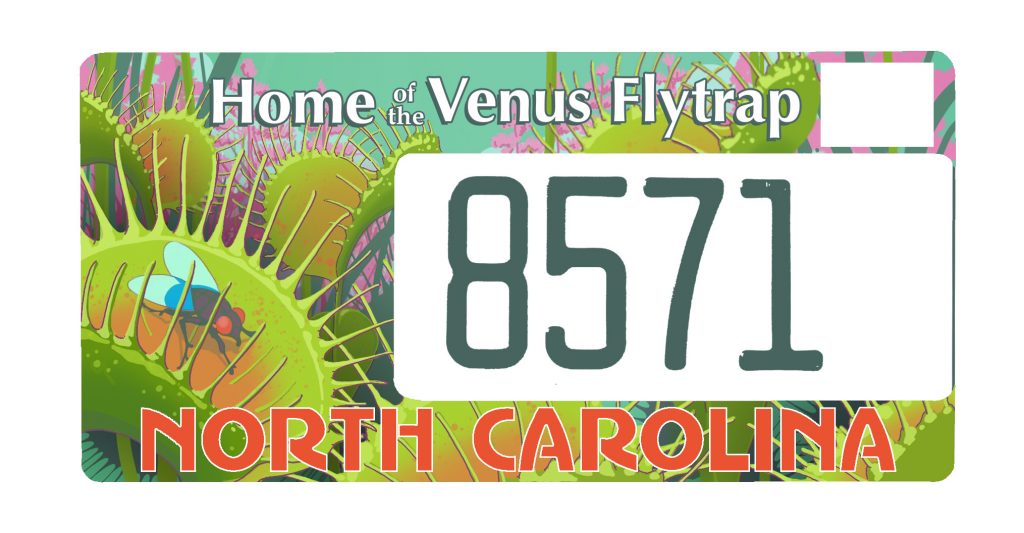Venus Flytraps are one on the most recognized carnivorous plant on the planet. We even see them influence pop culture (think Mario Bros and Little Shop of Horrors). They have a reputation for being picky and difficult to care for but most of that comes from a lack of knowledge. Once you understand what the plants need and what they are telling you, you can grow them for years to come!
First things first: Basic Care
Watering: This is one of the most important pieces of information. They like to be moist and never dry out. Typically I like to keep them in a tray with about 1/2 inch of water in the bottom, then refill as the tray dries out. The quality of water is just as important. They need pure water without a lot of minerals and salts. I recommend using rain water (be careful if you are collecting roof runoff), Reverse Osmosis (RO), or distilled. Tap water, well water, and bottled water (unless it specifically states that it is distilled) are generally considered UNSAFE. If you are unsure about the quality of your water you would like to use, you can buy a TDS Meter. They are quite inexpensive and readily available online and sometimes garden stores. I like to keep my TDS below 50ppm for carnivorous plants.
Light: They do best in FULL SUN. They will have the best coloring and grow strong with lots of light. I recommend growing flytraps outside for long term success. It is difficult to achieve high light levels in a windowsill because a lot of the time the window itself will filter light. It can also get very hot with the heat from the sun amplified by the glass. You may be able to use a growlight but honestly, I don't have much experience with indoor growing and am not an expert on brands to use.
Humidity: Not important.
Temperature: In the summer, the temperatures can get relatively high. Our greenhouse got up to 140F whenever the power went out and the flytraps were fine. I don't recommend it for any length of time but they can withstand the hot days as long as they are well watered and don't dry out. In the winter, I like to let them get down to about 40F. They can survive freezing temps if they are planted in the ground and protected but they will not do well with hard, sustained freezing temperatures.
Now it is time for some specific questions about flytraps-
Are there different species of Venus Flytraps?
No. Just like Highlander there can be only one- Dionaea muscipula. There are A LOT of cultivars out there though. Some are big, some tiny, some have odd teeth (cilia), some are red or yellow or all green (never blue- stay away from those Wish ads), and some are so misshapen the traps no longer close properly (looking at you Dm 'Buttcheeks').
Are they tropical?
Not even a little bit. They are actually endemic to a small area along the coast of North Carolina and South Carolina. We are very proud of them too!
Are your plants collected from the wild?
Absolutely not! It is a crime to remove plants from the wild as they are an endangered species (currently listed as vulnerable). We care deeply about our native flora and fauna and would do anything in our power to protect them. We primarily reproduce flytraps in our tissue culture lab (that is what the "Certificate of Origin" is in your paperwork when you place an order). There we can take pieces of the plant and grow new genetic copies. We also propagate using vegetative means outside of the lab using flower stalks or leaves.

When is the best time to repot?
I like to repot at the end of winter/ beginning of spring. The plants are getting ready to break their dormancy and start to put on new growth. It is the perfect time to give them a larger pot and new media. Speaking of media...
Can I use potting soil for my Flytrap?
It is best to use either peat with perlite and/or sand mixed in OR long fiber sphagnum moss (I like using milled LFS since it is easier to work with) and perlite. Either way make sure to use components free from fertilizers, added minerals, salts, wetting agents, pH balances ect. In other words - put down that bag of MiracleGro (ever the Perlite has fertilizers!). Personally we use Sungrow/ Fafard peat moss, Spagmoss LFS, Krum perlite, Orchiata orchid bark, and filter pool sand. There are other brands that work well, just make sure you read the label.

What kind of pot should I use?
I like plastic. It is readily available, inexpensive, and inert. You could also use GLAZED terracotta or glass (beware of heat though). Stay away from concrete, unglazed terracotta or metal pots. Also choose a pot that is deep. They don't need a lot of room horizontally but need the depth of their long roots. Drainage holes are important too.
I have my media and new pot, now what?
Now is the easy part. Blend your media (if making your own), wet it down with clean water and make a deep hole in the center. Place your plant root side down in your hole and use more media to fill in the hole until the plant is sturdy in the pot (there is a step by step post for dividing and repotting sarracenia that is much more detailed). Make sure that the rhizome is completely covered but the crown is exposed.

What is dormancy and can I skip it?
Dormancy is what happens when the weather gets colder and the days grow shorter. Dormancy is when the plant starts losing all of its large, beautiful summer traps and starts producing smaller low to the ground traps. I have a whole blog post dedicated to dormancy and how to properly care for your plants if you want more information Dormancy FAQ | Blue Ridge Exotics

